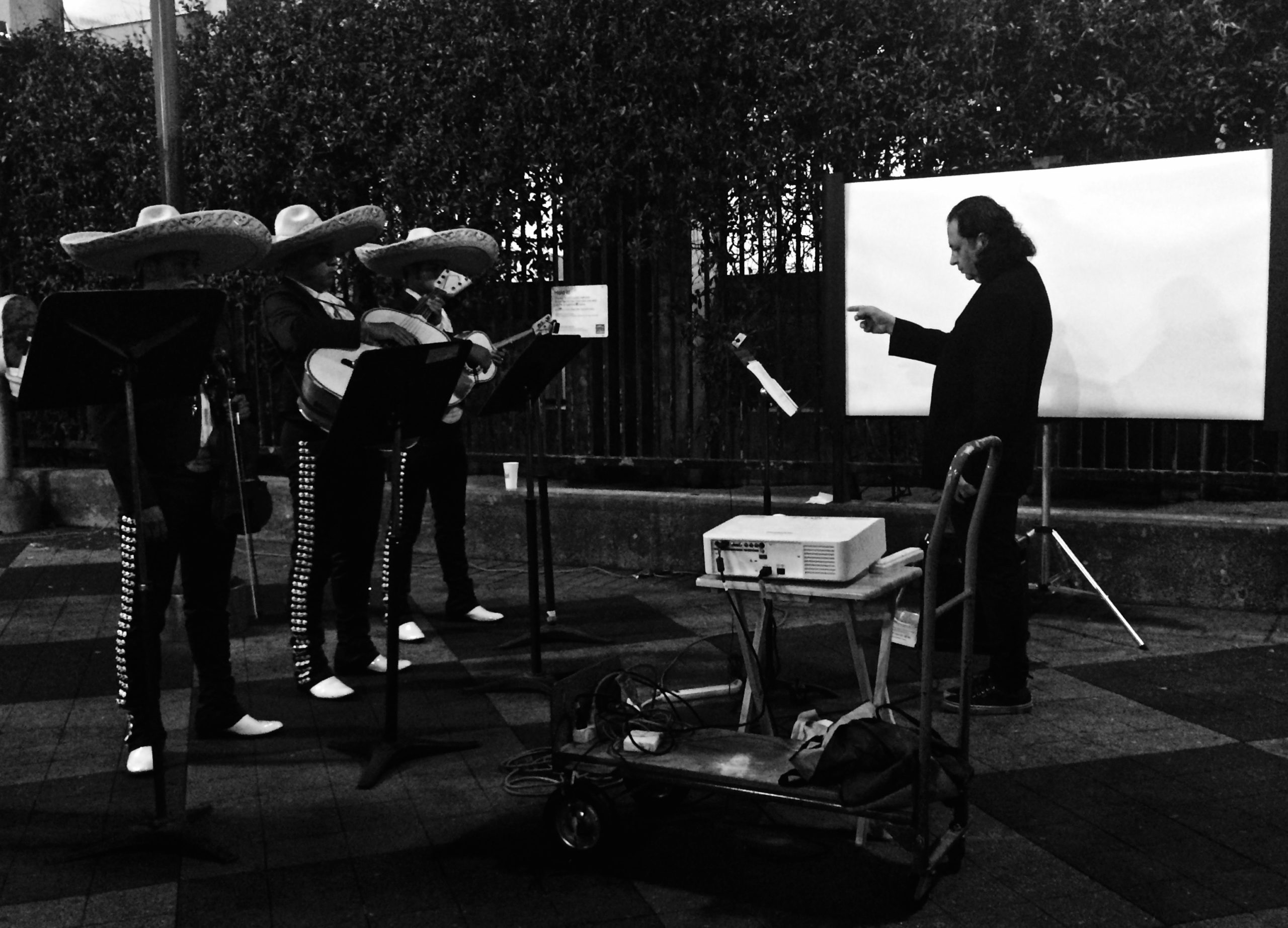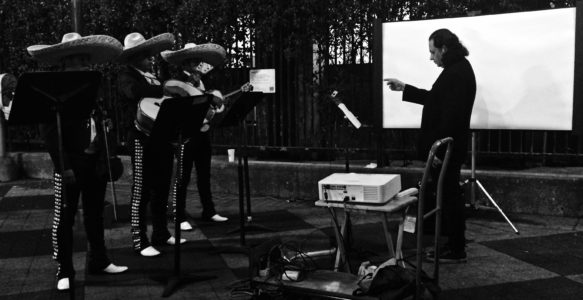Guillermo Galindo’s adaptation of John Cage Variations II performed by a Mariachi Band is the first installment of an experimental documentary by Jen Cohen which follows the process of bringing this controversial piece to the stage of the San Francisco Conservatory of Music and the San Francisco Museum of Modern Art John Cage’s 100 birthday celebration.
“Cage opened the door to all possibilities…”
David Bernstein Mills College music theory professor and author.
Guillermo Galindo’s idea of having Cage’s Variations II performed by a mariachi band is both a personal homage to his music and an act of psychomagic and self healing.
It was also a great opportunity to appease two seemingly irreconcilable worlds that are an integral part of his own musical universe.
The process of becoming a mediator between Western Avant Garde music and the oral traditions of Mexican folk music through a graphically notated score represents, was for him, an act beyond fascination.
The 10 year long “process” of putting this piece together was “more” or “as” important as the final performance itself. Facing the challenges and trying to establish any logical connection between two seemingly dissimilar musical traditions through endless discussions with Cage’s scholars and folk and Western musicians seemed at times an obvious act of insubordination.
Inextricable to this process was the careful video documentation and commentary by “video artist” Zen Cohen. The document resulting from the process is an integral and inseparable part of the piece and one doesn’t exist without the other.
The idea of repositioning an institutionalized Gestalt of unconnected musical aesthetics by placing both Cage and the mariachis in each other’s environment antagonized some while amusing others at both ends of the spectrum.
The score:
Peter’s Edition of Cage’s Variations II comes with a set of transparent sheets of plastic: In total, six transparent sheets of plastic containing 6 lines and 5 dots.
Cage asks the interpreter to: “Drop perpendiculars from the points to the lines (where necessary to extensions of the lines). “Measur(ing) the perpendiculars by means of any rule, obtaining readings thereby for 1) Frequency, 2) amplitude, 3) timbre 4) Duration 5) Point of occurrence in an established period of time 6) structure of event (number of sounds making an aggregate or constellation”.
He adds: “A single use of all the sheets yields thirty determinations”.
Galindo’s approach to the piece started by conceiving 3 different renditions of the score with durations of 15, 7 and 5 minutes respectively.
The longest perpendicular, in each score, becomes both the latest event in the score and the referential time of occurrence for the rest of the events.
Galindo decided to use a “color” graphic program (as opposed to the black and white lines and dots included in the score). This method worked perfectly and allowed me to clearly distinguish the lines going to each particular

